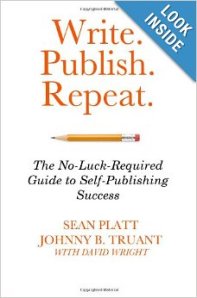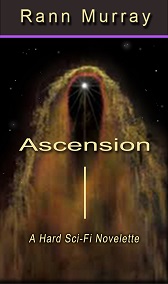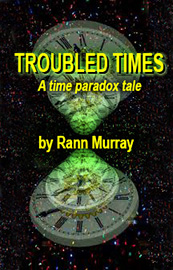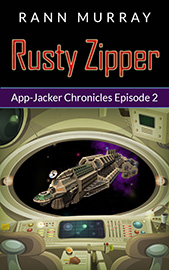You may be familiar with the Self-Publishing Podcast – hosted by Johnny B. Truant, Sean Platt, and David Wright – which has featured a wide variety of people doing unique and interesting things in the world of self-publishing. These podcasters have taken what they’ve learned from guests on their podcast as well as what they’ve gleaned from the numerous book series they’ve already published and combined them into a mammoth entertaining treatise called Write, Publish, Repeat (The No-Luck-Required To Self-Publishing Success).
This book gives you an inside look at the collaborative writing process of a team of three extremely prolific writers. These guys are not afraid of burning the midnight oil and their organizational skills and work ethic are something to be admired. They are responsible for such series as Yesterday’s Gone, The Beam, and Unicorn Western.
Several insights I gained from the book could prove quite helpful in organizing my writing process. The first is the concept of writing about situations as opposed to actually writing a story. I used to start writing with a partial plot and a given character situation rather than a well thought out story that had an Act III with an actual ending. This makes a big difference if you ever hope to finish a short story or novel and I can count on one hand the number of works I’ve actually finished due in large part to not thinking through a complete story before the actual writing begins. Some free writing pantsers will of course disagree but keep in mind thinking things through to an ending doesn’t mean you are locked in to that ending. During the past six months I have put a lot more focus on endings when I start a project but the concept of situation vs. story put a handle on it and reinforced the importance of having a three act story, nailing down an ending even if you end up changing it in the final stretch.
The second concept which I think I’ll find the most useful is the technique of beat writing as a precursor to actually writing the first draft. Writing the beats of a book is not an outline but is more akin to Cliffnotes or writing chapters and scenes in shorthand so that you have a guide to follow when you actually dig in to preparing your first draft. As the authors phrase it, “[Story Beats look like] they were written by someone who was barely paying attention”. When actually writing the draft, you don’t have to completely echo the beats but at least it gives you a guide to follow and speeds up the first draft process.
 Here’s an example of beats that the authors offered from their book Unicorn Western written for children and teens. Please excuse the profanity but that’s just the way this beat writer rolls:
Here’s an example of beats that the authors offered from their book Unicorn Western written for children and teens. Please excuse the profanity but that’s just the way this beat writer rolls:
Chapter 5: Clint is now all angry and grizzled and fuck everyone, so he decides to go up on the Mesa, and use Edward’s magic to look across the plains and see what he can see. As he’s leaving town, he’s approached by Theodore (mention him earlier), an orphan kid who does odd jobs for everyone. Teddy wants to go with Clint, but Clint tells him he can’t. He’s too young and will get himself killed. Teddy insists, and reminds Clint that he was looking for reinforcements. Two is almost worse than one since it’s more like a tagalong. He either needs a lot of people, or he needs to be by himself. The kid sticks up for himself, and after a short and funny argument wins Clint’s approval. He finally agrees to let him go. He has his own horse, but he’s so poor that his horse is the cowboy equivalent of a Pinto. Edward acts like a cock about it. They ride out of Solace together. Clint feels guilty during the ride, wanting to go back to Mai. He thinks about his haunted past, and how lonely he’s always been. How maybe all of his habits are wrong. Maybe the best thing he could do would be to return to Solace, sweep Mai onto the back of Edward, then ride through the night on their first day toward The Realm. Not far from the Mesa, they run into trouble. A band of outlaws is stopping by a stew pool, wells of water scattered throughout The Sprawl. The water inside stew pools is replenishing for mind and body. One might say magical.
Chapter 6: The kid wants to charge them, and knows the Marshal could do it. Clint tells him he’s a fucktard and too young to know it. The kid argues that Clint’s too old, and that his instincts are dull. Clint smacks him down, articulating why he’s the king of the motherfucking desert. Way Clint sees it, no one’s in The Sprawl by accident, and it makes a lot more sense to see what they’re up to than to kill them outright. The kid argues that they need the element of surprise. Clint checkmates his shit because the element of surprise isn’t dick when you ride with a unicorn. Clint tells some story about the kid that shows he’s an impulsive fuckup, then they agree to circle around and use Edward’s magic to see what they can find out.
______________________________
So I sat down to write some beats to a short story I had outlined with sticky notes on a storyboard that I put together a week ago with cardboard and duct tape. See below. I use this board for short stories and I’ll be using a larger linear board for novels (you can see part of it in the background).
 For examples of what these look like up close see my article on The Process of Writing.
For examples of what these look like up close see my article on The Process of Writing.
I started the beat writing at Chapter 1, Scene 1 and ended up buzz sawing through the first 5 chapters and scenes in a flood of writing. It was as if my subconscious had finally found a method to release what it had already worked out for this particular story. Was it pretty? No it’s a hack job of word streaming but I can clearly see where I’m headed in the story and have a great guide to actually writing a first draft. Here’s a beat story example of a chapter and scene from my short story, working title ‘Diorama’:
Chap 2 Scn 2: Ruth Holden is tossing and turning in bed and can’t sleep. She starts running through her mind what a hell on Earth the past couple of months have been. Her field supervisor sent her to Lansing, Michigan after an influx of 200 patients invaded all of the surrounding hospital emergency rooms reporting hallucinatory symptoms involving severe headaches along with the belief that they are recalling repressed memories they didn’t know existed. The patient population is growing so fast it appears to be some kind of airborne virus, the most rapidly infectious kind of pathogen. Ruth and her containment team descend on the capital city as well as East Lansing where the university is located with a fleet of CDC vans. They set up shop at one of the local hospitals. Patients entering the hospital who report symptoms of the hallucinatory virus now known as the Hal-Virus must be screened by the hazmat suited team to be tested for possible pathogens. Once cleared by the hazmat team, all patients are send back to the emergency room to be assessed for possible admission to the psych wards. Physicians are at a loss about what to do and the psych wards are rapidly getting beyond capacity. Spillovers are being sent to county jails for safekeeping.
Psychiatrists start treating victims with atypical antipsychotic drugs the most effective being Closaril which is used in treating hallucinations and delusions. Unfortunately while the anxiety of the patients are reduced the foreign memories persist.
Ruth recalls the most interesting of recent cases involving Lilly Thomson, a psychiatric nurse at a nearby hospital, who started talking to her patients about her new found hobby of coin collecting and how a hobby might be helpful in distracting them from the influx of new memories they’ve been experiencing. That went well until she told them that her hobby involved collecting Roman coins from the 4th century with elaborate details about the homes, culture and habits of the locals of that period that were too accurate and realistic. Later she claimed that she actually lived in the 4th century as a Roman prefect by the name of Flavius Filagrius who was in charge of a strategic granary and given the title of Praefectus Augustalis. She was admitted to the ward to reside among her patients.
There have been confirmed outbreaks of the Hal-Virus outside of the U.S. in London, Paris, and the Philippines.
A large percentage of people can’t shake the feeling that what they’re experiencing are repressed memories of things they have done in the past and they are either so foreign, exotic or barbarian that they lose touch with their former reality and have to be admitted for psychiatric care.
Ruth is at a loss as to how to deal with a virus that so far has been undetectable with present day technology. There appears to be only one thing left to do. Narrow down the search to patient zero or at least hone in on the source of the infection.
Ruth’s phone rings and its her assistant Bill Pullman who informs her that they have a Dr. Dane Gilmore who voluntarily turned himself in to the MSU Campus Police claiming that he may have caused the Hal-Virus and he has some important information which could shed light on this whole thing. What do you want us to do with him?
Hold him and don’t let him out of your sight! I’ll be right over.
______________________________
I found that combining beats with a well thought out storyboard just might get me through that first draft a lot faster. It probably will considering that the story beats consist of a free flowing summary of the entire story including all chapters and scenes.
One pleasing result from using beats is that my characters started to distinguish themselves from one another and two more characters popped up to let me know they had to be part of the action so I wrote them in. Beats freed me up to just write without worrying about dialog, grammar or smooth flowing narrative. The faster you write them the less chance your critical self has to engage and interfere with getting it all down. In fact, the authors recommend that you finish the beats as well as the first draft absolutely as fast as you can to avoid having to worry about perfection.
______________________________
I have given you only a small sampling of what you’ll find in Write, Publish, Repeat. Besides being an entertaining read the book is loaded with ideas related to editing, publishing, and marketing such as the self publishing landscape, pre-production and post-production, funnel marketing, keyword research, Scrivener vs. Word and Lightning Source vs. CreateSpace plus many more.
One last bit of wisdom that could be useful is that if you aren’t enjoying what you’re writing, if it doesn’t get you excited when you think about it, scrap it and start something else. They’re not saying that writing isn’t hard work or a grind sometimes but if you don’t get excited or enthused about once in awhile, it’s time, to opt out and start another project. I believe that’s true.
The authors plan on releasing more books in the near future regarding their writing process which I’m definitely looking forward too.
Amazon: Write, Publish, Repeat







Great article. When I write, it is very similar to this process (beats) and your own (sticky notes). I travel between FL and NYC often, so I had to come up with a compact version of your sticky notes, while in transit. As I thought through a scene, or had an ah-ha moment or expanded character development, I would go to the bottom of my document and create an appendix of flowing thoughts and organize them into categories (chapters). This way, when I got to my chapters I could reference those fleeting thoughts of past, I also did not concentrate on plot, but scenes that I really wanted to get across. I agree, the pre-draft (what many think of as the 1st) should really be a stream of unconscious writing– what you want to convey without getting bogged down with style, grammar, etc. Like hanging your best thoughts, randomly, on a clothes line. The fist draft occurs when all the thoughts are dry and you remove them from the line, folding them neatly to arrange in the drawers. The final draft is picking out what to wear to your book signing 😉
I do like using this concept and it works. Thanks for fine tuning my process and posting this.
Thanks! I like your clothes line analogies which ring true to what we’re trying to accomplish with our writing process. Beats combined with a storyboard really help bring everything into focus.
Pingback: Syndicate Spotlight #43: Unicorn Western: Full Saga (Books 1-9) | The Literary Syndicate